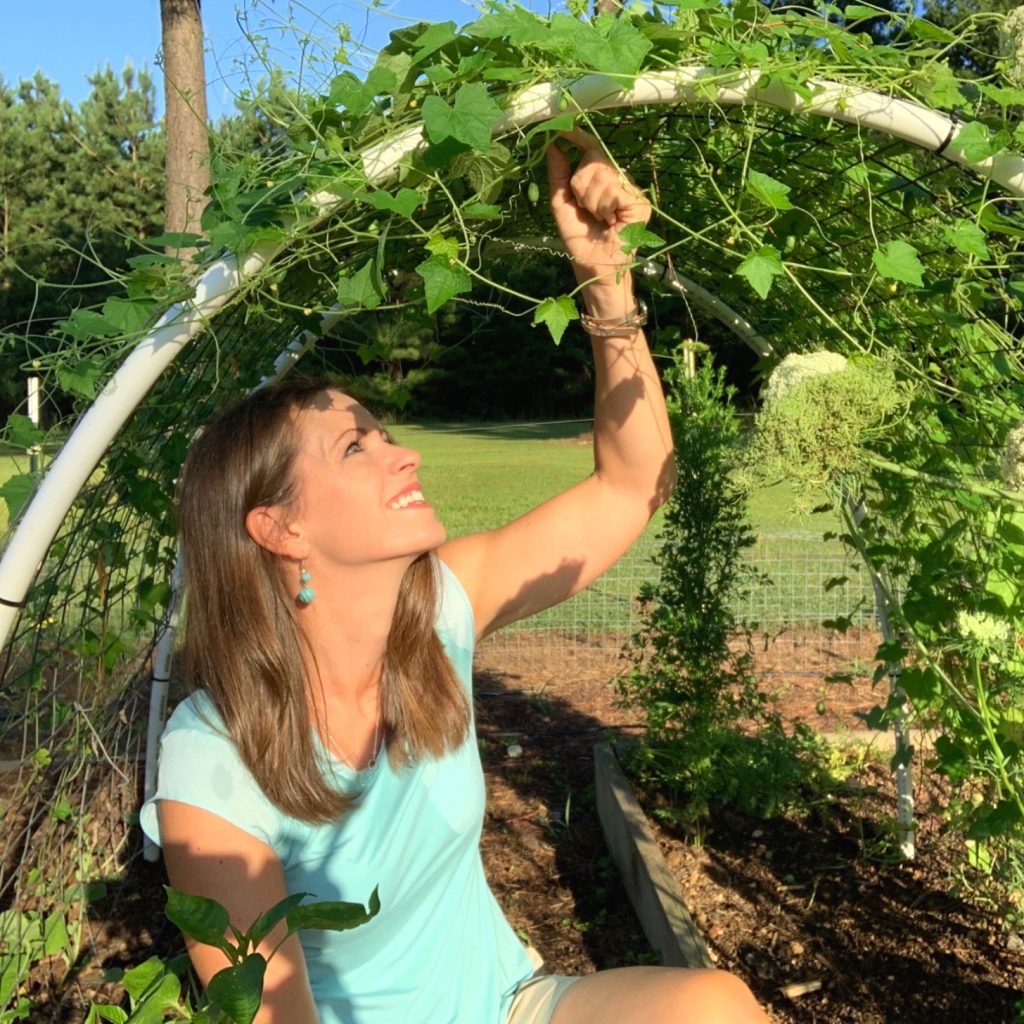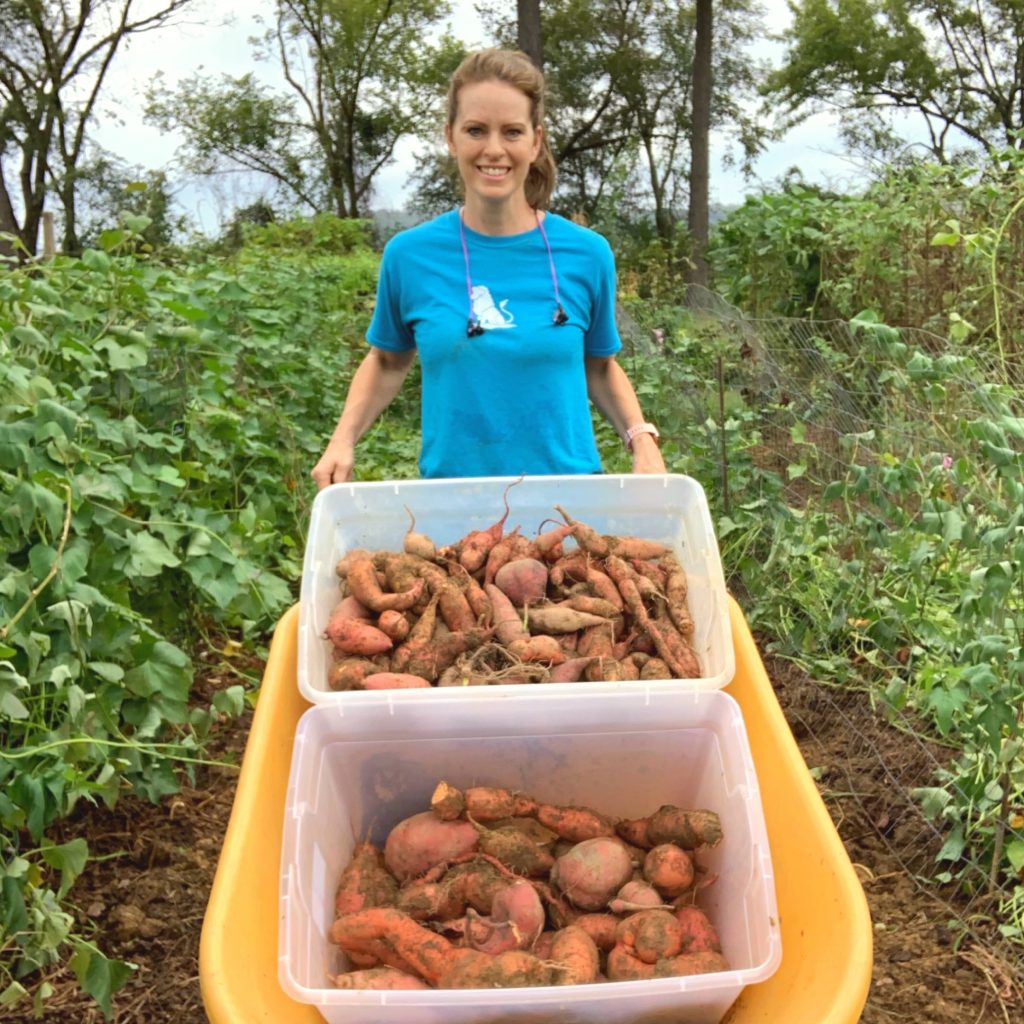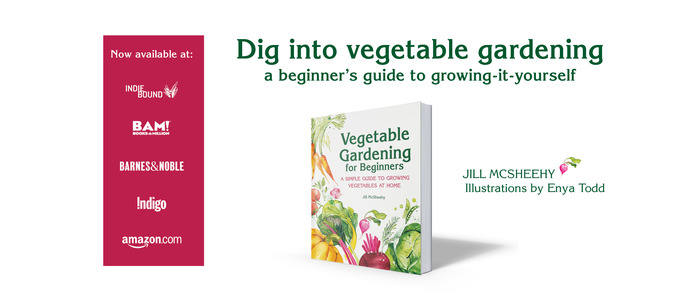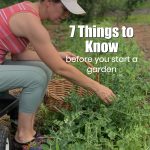7 Things to Know Before You Start a Garden {Vegetable Gardening for Beginners}
When I started my first garden, I had no idea what to expect, what to do, or where to start. But determination propelled me through all of those uncertainties. And thankfully, I experienced enough success that I was hooked.
Eight years later, I strive to help other beginners (like I was) learn to start their own gardens without the doubt and uncertainty that I experienced.
*Links below are affiliate links; as an Amazon associate, I earn from qualifying purchases.
In my book, Vegetable Gardening for Beginners, I walk beginning gardeners through starting their own gardens. But before you start making plans, building beds, or purchasing seeds, it’s important to go into this endeavor with the right mindset.
And with that in mind, here are seven things to know before you start a garden. These are seven things I wish I had known before I started mine, excerpted from my book, Vegetable Gardening for Beginners.

Grow what you eat.
Before the mouthwatering photos in seed catalogs lure you into trying a myriad of vegetables, pause for a moment. Make a list of the vegetables your family actually enjoys eating. Then, consider which of those you want to grow. The last thing you want is a bed full of kale when nobody in your family likes it. Focus on the vegetables your family wants to eat and learn to grow those well.
Don’t be afraid to experiment.
What if your family might like kale? Or what if you can’t stop thinking about purple carrots or cute cucamelons? By all means, make room for them. Earmark a small section of your garden for experimental crops. I call them “rookies” because they’re “trying out” for a permanent spot. But a garden of only experiments will probably disappoint. Keep most of your space for your family’s favorites, and fit in a few rookies to keep it fun.

Understand that not everything will grow well in your climate.
Every garden has different growing conditions that make some crops flourish and others struggle. Though the plant profiles in my book, Vegetable Gardening for Beginners, guide you in a general sense, you will learn which plants work in your garden by trying them out.

Embrace failure.
What if I told you that failure can be one of your greatest assets? No, I’m not talking about the total failure of your garden. I’m talking about small disappointments, which we all have. When you do fail, instead of giving in or giving up entirely, find the cause of the failure. From there, you can either adjust your garden for the current season or plan to change it for the next year. One of my greatest successes—learning to plant squash and zucchini at the end of the summer for a fall harvest—came after a devastating failure, when squash vine borers killed my midsummer planting. By expecting and embracing failure, you set yourself up for future success.
Be patient.
Your local garden center may display tomato plants in February, but that doesn’t mean you can plant them in your garden in the middle of winter. Nor does an early spring warm spell signal planting time. Seasoned gardeners have learned (through many overeager attempts) that waiting for the proper time to plant produces the best results. In most cases, this will require patience, but it will be worth it.

Mother Nature has the last word.
We shouldn’t use the weather as an excuse for every crop failure, but we do need to consider real weather conditions that affect our plants. Tomatoes struggle more with fungal issues in rainy springs, and summer crops provide bigger harvests when a fall frost comes late. Consider these factors before deciding whether to repeat a crop or try another one.
Take it easy and take it slow.
Starting a small garden doesn’t require a huge investment of money or time; a few starter tools will suffice. Nor do you need to spend hours in research. Get the basics down but protect yourself from information overload. As you gain experience, you’ll have fun exploring more advanced techniques and ideas, but save that for later. For now, focus on what’s really important and enjoy the process.
Before I planted my first garden, I consumed gardening books by the handful. But I found most of them lacking in some of the most basic beginner information. That’s why I wrote Vegetable Gardening for Beginners to speak to the gardener with zero background knowledge on gardening.
My hope is that through my frustrations as a beginning gardener and my experience in my garden over seven years, I can come alongside you and help you grow your best beginning garden you can imagine! Click here to order your copy!

Do you get overwhelmed with garden planning?

Subscribe here for my best tips to plan your garden in just 7 days -- all for FREE.
Plus, I'll send you my "In the Garden E-mail" on Fridays, periodic updates on garden resources relevant to you, and you'll receive access to my entire bank of free garden downloads!
You are also agreeing to our privacy policy.

